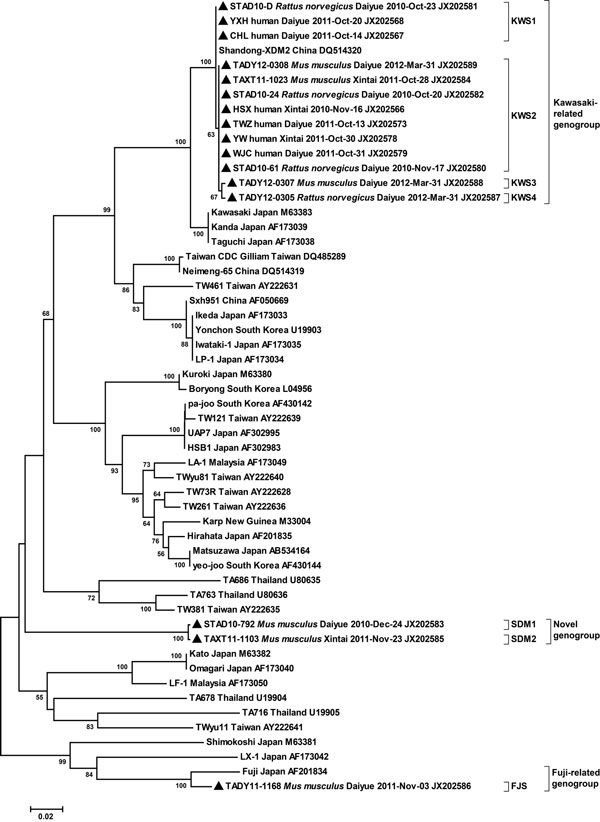Volume 19, Number 7—July 2013
Dispatch
Genetic Variants of Orientia tsutsugamushi in Domestic Rodents, Northern China
Figure

Figure. . Phylogenetic relationships of Orientia tsutsugamushi detected in domestic rodents and human patients with scrub typhus in rural areas of Tai’an, Shandong Province, China, September 2010 through March 2012. Relationships were determined on the basis of the partial 56-kDa type-specific antigen gene of O. tsutsugamushi by the minimum-evolution method with the Kimura 2-parameter distance model. Bootstrap values >50% are shown at the branches. Location and GenBank accession numbers are indicated for each sequence. Sampling sources and sampling date are also indicated for sequences determined in the study. Solid triangle indicates sequences determined in this study. Scale bar indicates genetic distance.
Page created: June 18, 2013
Page updated: June 18, 2013
Page reviewed: June 18, 2013
The conclusions, findings, and opinions expressed by authors contributing to this journal do not necessarily reflect the official position of the U.S. Department of Health and Human Services, the Public Health Service, the Centers for Disease Control and Prevention, or the authors' affiliated institutions. Use of trade names is for identification only and does not imply endorsement by any of the groups named above.